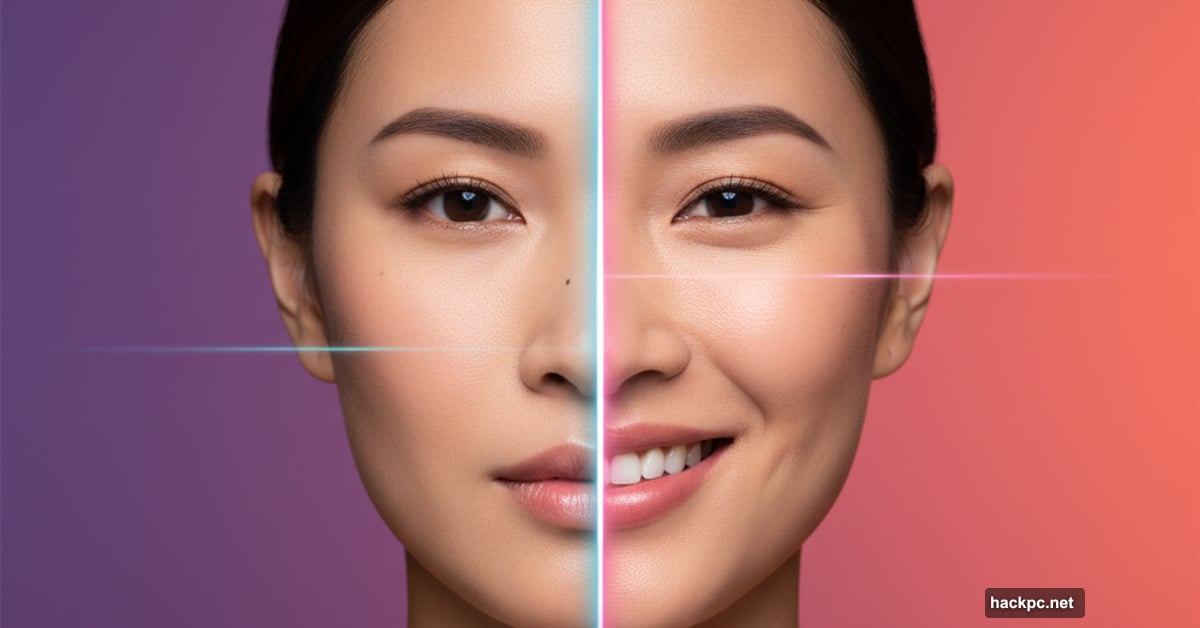
Most AI image generators feel like magic tricks. Impressive demos, sure. But try using them in actual client work? They fall apart fast.
Nano Banana breaks that pattern. Google’s Gemini 2.5 Flash model does something competitors still struggle with: it edits images intelligently while keeping the subject recognizable. That matters way more than it sounds.
Why This Tool Feels Different
Traditional AI generators start from scratch every time. So changing one element often scrambles everything else. Want your model to smile instead of looking neutral? Most tools give you a completely different person.
Nano Banana preserves identity across edits. The same face stays consistent through expression changes, outfit swaps, and scene variations. Plus, it maintains lighting quality and visual style without constant re-prompting.
That consistency transforms how designers can actually use AI. Instead of generating hundreds of variations hoping one works, you iterate deliberately. The subject stays recognizable. The brand aesthetic holds together. Your creative control remains intact.
Change Expressions Without Losing Identity
Studio photography clients often need multiple emotional variations of the same shot. Previously, that meant booking another session or settling for whatever you captured on the day.
Now you can generate six different expressions from one base portrait. Neutral, smiling, laughing, speaking, playful, confident. The model’s identity, hairstyle, outfit, and lighting stay locked. Only the expression shifts.
For editorial work, this cuts production time dramatically. Fashion brands testing emotional ranges for campaigns can iterate in minutes instead of days. The model doesn’t need to come back. The photographer doesn’t reshoot. You just adjust and export.
Sample approach: Start with your strongest base image. Specify which expressions you need. Keep lighting and camera angle descriptors consistent. The model handles the rest while maintaining photographic realism.
Outfit Changes That Actually Look Real
E-commerce teams burn budgets on repetitive product shots. Same model, six outfits, identical lighting setup. That’s expensive and time-consuming even with efficient shoots.
Nano Banana lets you swap outfits digitally while keeping everything else consistent. Black leather jacket, red silk dress, white T-shirt, navy blazer. The model’s face, hair, pose, and background remain identical. Only the clothing changes.
Fabric textures render realistically. Draping looks natural. Fit appears accurate. For online stores testing different product presentations, this saves thousands in photography costs.
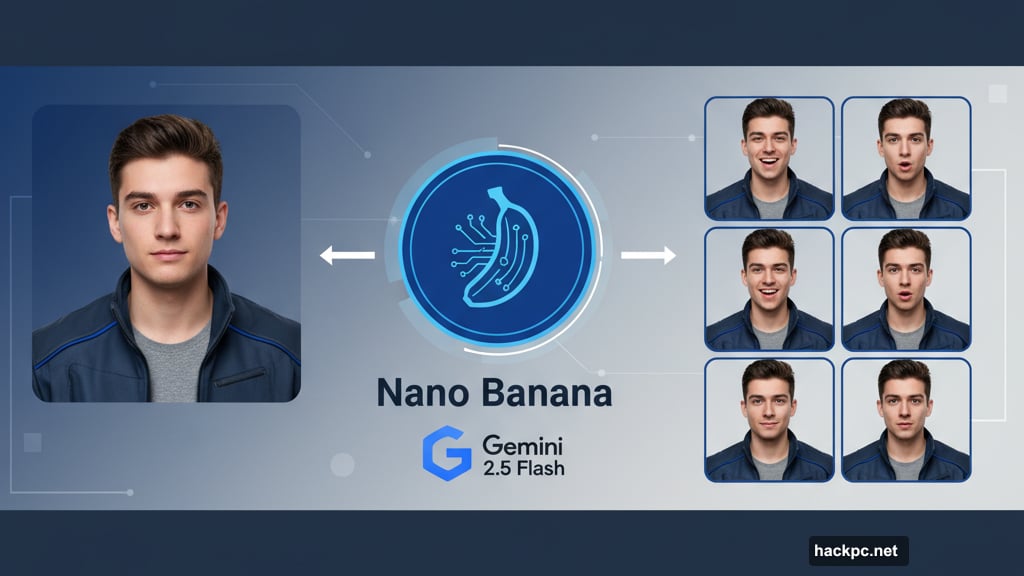
One creative director told me they generated 30 outfit variations in an afternoon that would have required three separate shoots. The client approved options faster because they could see more possibilities quickly.
Build Storyboards Without Reshooting
Film and music video pre-visualization traditionally requires artists sketching concepts or photographers capturing reference shots. Both take time and struggle to show realistic lighting and composition.
Generate cinematic storyboard sequences with consistent characters across multiple scenes instead. Your protagonist moves through environments while maintaining identity, outfit, and visual style. Close-ups, wide shots, action moments, emotional beats.
For pitch decks and client presentations, this elevates your concepts dramatically. Directors can visualize sequences before committing to expensive shoots. Producers understand the aesthetic you’re targeting. Everyone aligns faster.
Practical tip: Define your character thoroughly in the first prompt. Then reference that base description while adding scene-specific details for each storyboard frame. Consistency comes from detailed initial setup.
Capture Athletes In Impossible Moments
Sports photography requires split-second timing and perfect positioning. Miss the moment? You don’t get it back.
AI generation lets you create dynamic athletic shots that would be difficult or impossible to capture traditionally. Show the same athlete in multiple poses: standing ready, tying shoes, jumping mid-air, sprint start position, intense close-up.
The identity stays consistent. The energy feels authentic. The lighting maintains professional quality. For brands needing diverse athletic imagery without complex photoshoots, this changes the economics completely.
Moreover, you can generate poses that would require dangerous setups or perfect timing. The technology handles the physics while you focus on composition and storytelling.
Turn Photos Into Collectible Figurines
Product visualization for physical merchandise used to require 3D modeling skills and rendering software. Creating realistic figurines from character designs meant hiring specialized artists.
Now you can transform action shots into photorealistic 3D figurine concepts. Basketball players become collectible tabletop models complete with display bases and packaging design. The transformation maintains character identity while adding sculptural detail and material textures.
For entertainment companies pitching merchandise lines, this accelerates concept approval. Investors see photorealistic products instead of sketches. Licensors understand exactly what you’re proposing. The feedback loop tightens significantly.
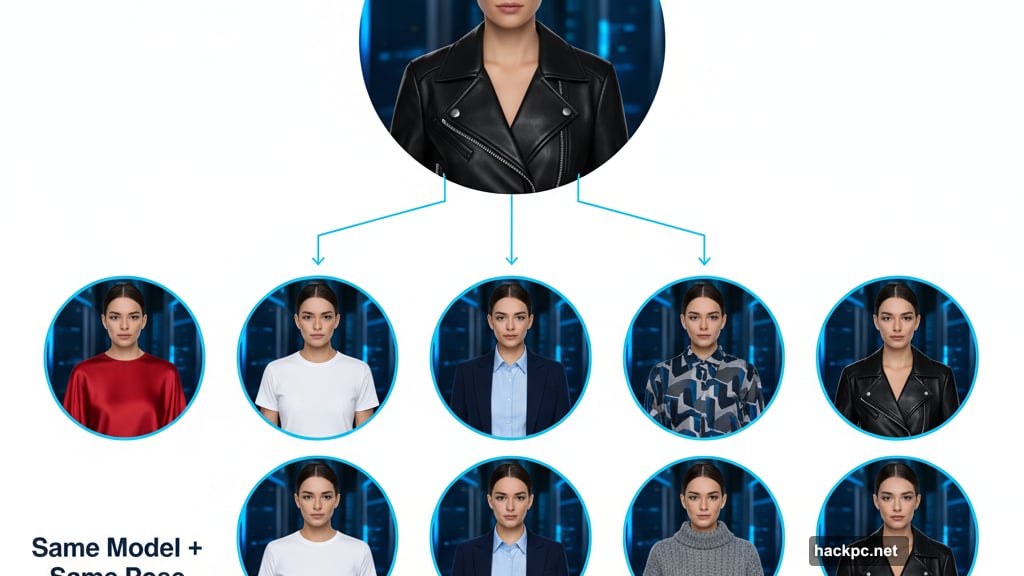
Create Unified Ad Campaigns Fast
Brand campaigns need visual consistency across multiple touchpoints. Same model, different scenarios, unified aesthetic. Traditionally that requires extensive planning, long shoots, and hoped-for consistency in post-production.
Generate complete campaign series instead. Your model pours the drink, serves it, holds it, sips it, celebrates with it. Identity, styling, lighting, and color palette remain consistent. The campaign feels cohesive because the AI maintains visual continuity automatically.
For agencies working with tight deadlines, this flexibility matters enormously. Client wants to see the campaign with different backgrounds? Regenerate in minutes. Need emotional variation? Adjust expressions without reshooting. The iteration speed transforms what’s possible in campaign development.
Test Color Variations Instantly
Color grading sets mood and drives brand recognition. But testing variations traditionally meant manual photo editing or requesting multiple versions from photographers.
Take one strong portrait and generate multiple color treatments. Monochrome, vibrant, pastel, cinematic. The composition stays identical. The subject remains recognizable. Only the color palette shifts.
For brands exploring visual identity options, this accelerates creative exploration. Marketing teams can test different aesthetic directions without committing to full shoots. Everyone sees concrete examples instead of debating abstract concepts.
Generate Clean E-Commerce Photography
Product photography for online stores requires specific standards: white backgrounds, consistent lighting, multiple angles, clear detail shots. Professional photography delivers this but costs significantly for large catalogs.
Generate professional e-commerce shots that meet platform requirements. Shampoo bottles from multiple angles. Fashion items with detail close-ups and full-body shots. Clean white backgrounds. Soft studio lighting. Optimized for online listings.
The quality hits commercial standards. The consistency stays reliable. For brands managing hundreds of SKUs, this dramatically reduces photography costs while maintaining professional presentation.
Important note: This works best for products where exact physical accuracy matters less than visual appeal. Complex products with specific material properties still benefit from traditional photography.
Transform Products Into Technical Visualizations
Technical visualization traditionally requires specialized 3D software and trained artists. Showing product internals or converting physical objects to digital blueprints meant expensive custom work.
Convert product photos into futuristic wireframe holograms instead. Show the original alongside its transparent digital version with glowing geometric details and semi-transparent structure. The transformation maintains product accuracy while adding high-tech aesthetic.
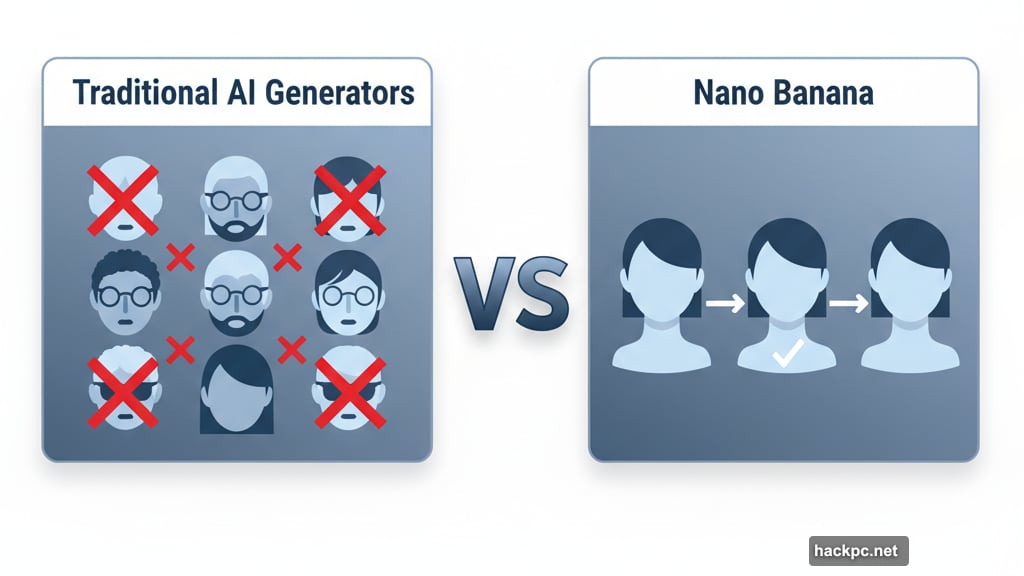
For presentations pitching technical products or showing digital transformation concepts, this visualization style communicates sophistication and innovation. Plus, it looks incredible in pitch decks and marketing materials.
What Makes It Work So Well
The real breakthrough isn’t individual features. It’s how Nano Banana maintains subject fidelity across transformations. Older tools distorted faces or changed identities after edits. This model prioritizes consistency.
That consistency comes from precise prompt design. Detailed descriptions of lighting, background, and perspective help the model render realistic outputs with fewer artifacts. The more specific your prompt, the better the result.
Moreover, Google built in SynthID watermarking for all outputs. Every generated image includes transparent tracking. For commercial work where image provenance matters, that traceability provides crucial protection.
Where It Still Struggles
No tool handles everything perfectly. Nano Banana can struggle with overlapping limbs, complex reflections, and intricate textures. Knowing these limitations helps you plan outputs more effectively.
Competitors like Seedream 4.0 push boundaries with faster speeds and multi-reference support. But Nano Banana currently leads in style consistency and identity preservation. That advantage matters most for professional workflows where brand consistency is non-negotiable.
Plus, as Adobe integrates these capabilities into Photoshop, designers can use Nano Banana directly in existing workflows. No platform juggling. No export-import cycles. Just seamless creative iteration.
The Practical Reality
This technology isn’t replacing designers. It’s extending capabilities and accelerating workflows. Complex tasks requiring hours of manual work now complete in minutes without compromising quality.
But the real strength lies in thoughtful use. Treat Nano Banana as a collaborator, not a replacement. It handles repetitive variations and mechanical transformations. You focus on storytelling, strategy, and creative direction.
For agencies managing multiple clients and tight deadlines, this matters enormously. The tool amplifies your creative capacity without diluting your vision. You explore more options, iterate faster, and deliver stronger concepts.
These ten use cases just scratch the surface. The technology will keep improving. Competitors will push capabilities further. But right now, Nano Banana represents a genuine shift in what’s possible for working designers.
Your creative process can move faster without sacrificing control. That’s worth paying attention to.
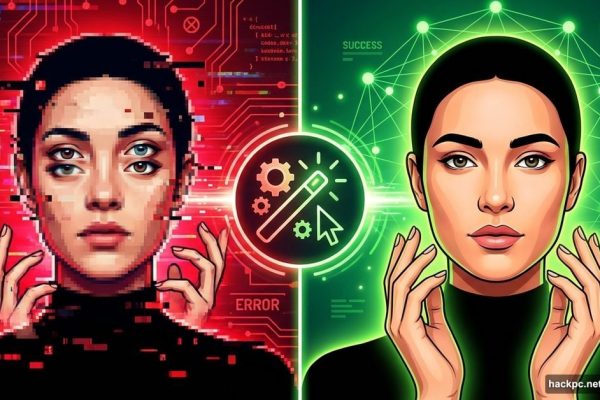
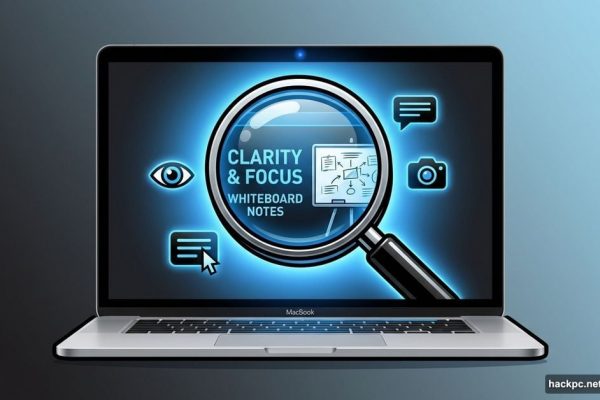

Comments (0)